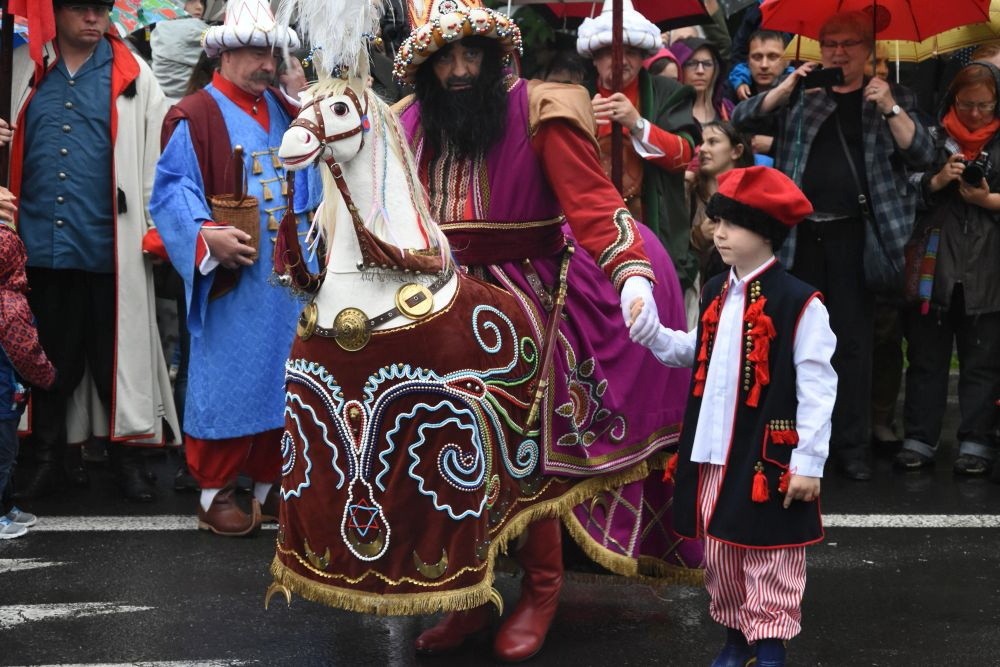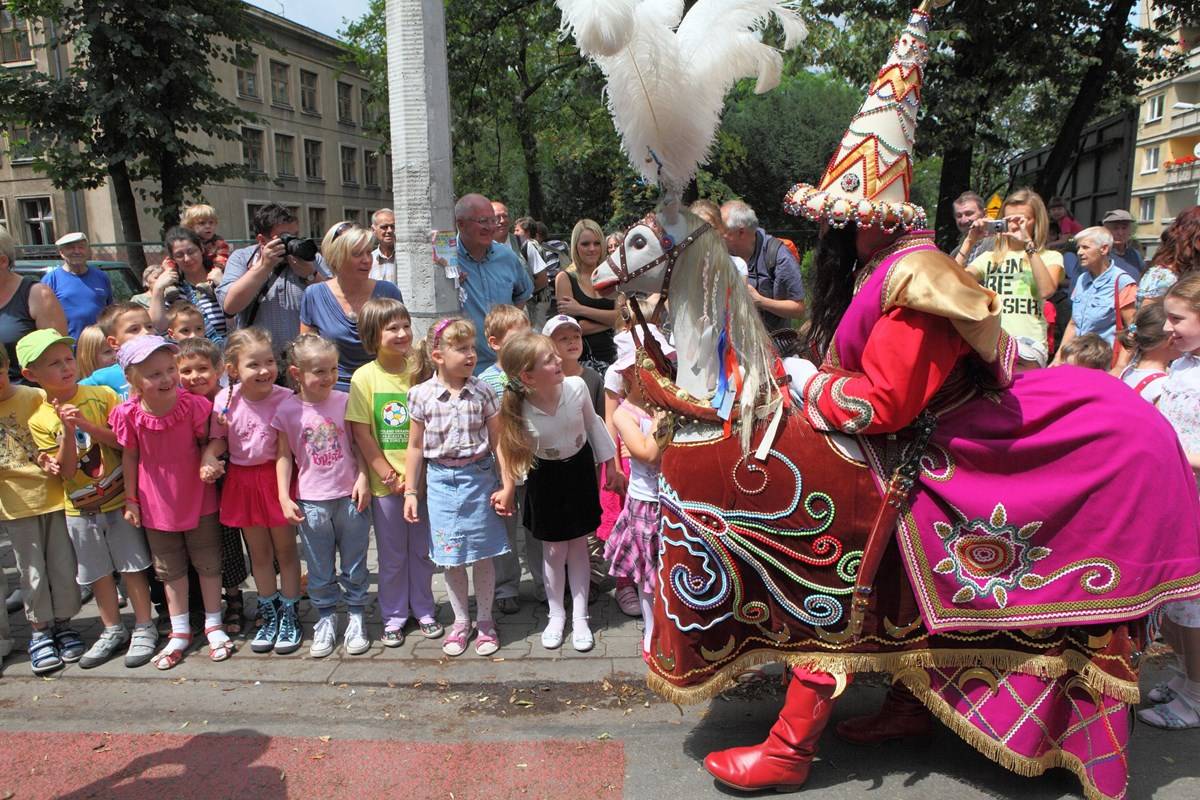Lajkonik – the symbol of Cracow
Lajkonik, nasz Lajkonik,
po Krakowie zawsze goni,
Lajkoniku laj, laj, poprzez cały kraj, kraj,
Lajkoniku laj, laj, poprzez cały kraj.
in english: This Lajkonik, our Lajkonik,
always chasing after Krakow,
Lajkonik lay, lay, through the whole country, country,
Lajkonik lay, lay, through the whole country.
This song, once a year, in the octave of Corpus Christi, accompanies the march of Lajkonik. Lajkonik sets off from the courtyard of the monastery of the Norbertine Sisters from Zwierzyniec district and begins his parade through some streets heading to the Main Square, to the delight of many gathered Cracovians and tourists.

Followed by a company of men clad in historical costumes and a raucous musical band, that bearded fake Mongol halts their procession for a while every now and again to perform his prancing dance. On his way to the central square, the Lajkonik visits chosen shops and restaurants to collect a “ransom”. And he never tires of pretending blows with his mace, dealing with everyone within reach, as the touch of the mace allegedly brings good luck and people swarm around him, a small change in hand to pay their “ransom”.

But what is all about Lajkonik? Why do we celebrate it?
One popular legend explains the Lajkonik festivities as the commemoration of a defeat of a Tatar (i.e. Mongol) troop in the 13th century. The story explains that the people of Cracow killed one of the leaders, a Tatar Khan, and the victorious defenders dressed up in the Khan’s clothing and triumphantly rode into the city. The Mayor of Cracow announced that to commemorate the event, a raftsman dressed as the Tartar Khan will enter the city once a year, leading the cortege.
If you have enjoyed reading this article, why not subscribe to our newsletter! So that where there is a new blog you could be notified. Also, you can win take part in our competition that we organize from time to time to win holidays to Prague or to Cracow. It would be nice to keep in touch! 🙂

Recent Comments